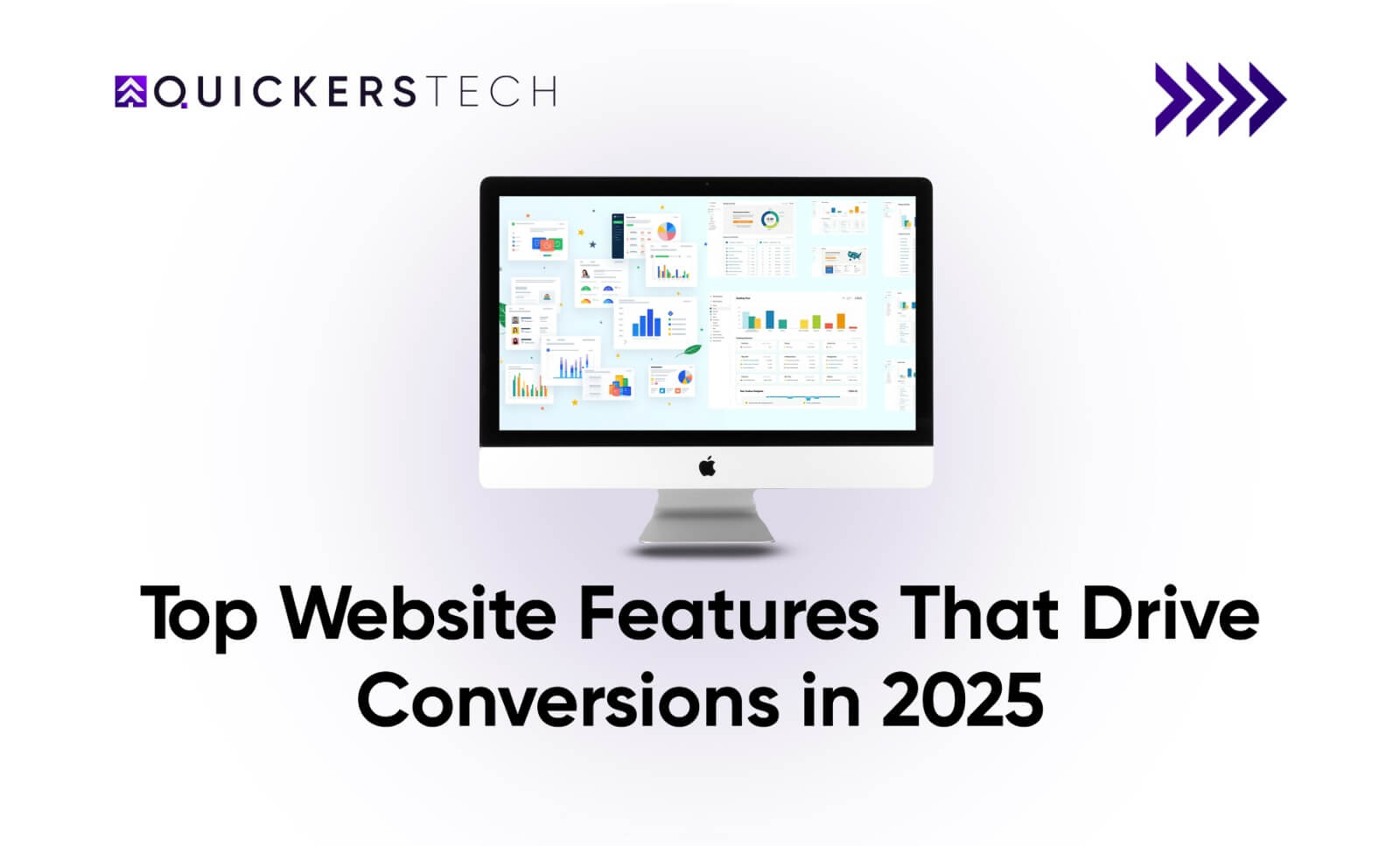Contents
- 1 Key Mobile App Development Trends Shaping 2025 and Beyond
- 1.1 1. AI-Powered Mobile Apps: Smarter Than Ever
- 1.2 2. 5G Technology: Supercharging Mobile Performance
- 1.3 3. Cross-Platform App Development
- 1.4 4. AR & VR for Immersive User Experiences
- 1.5 5. Blockchain for Enhanced App Security
- 1.6 6. Voice Technology and Conversational Interfaces
- 1.7 7. Foldable Device Compatibility
- 1.8 8. On-Demand Apps for Niche Markets
- 1.9 9. App Security and Privacy Regulations
- 1.10 10. Mobile Commerce (M-Commerce) Optimization
- 1.11 11. IoT-Integrated Mobile Applications
- 1.12 12. Low-Code and No-Code Development Tools
- 1.13 13. Cloud-Based Mobile Applications
- 1.14 14. Wearable App Development
- 1.15 15. Sustainable & Energy-Efficient Mobile Apps
- 2 Conclusion
Mobile apps have become the heartbeat of our daily lives. From ordering groceries to booking a doctor’s appointment, everything is just a tap away. But as user expectations rise, so does the need for innovation. A forward-thinking mobile app development company must now go beyond just functionality, focusing on speed, personalization, and seamless experiences. The mobile app development trends in 2025 reflect not just cool tech upgrades but real answers to user pain points. This shift toward Modern App Development is what sets successful apps apart in today’s highly competitive digital landscape.
So, what’s shaping the mobile experience this year? Let’s dive deep.
Key Mobile App Development Trends Shaping 2025 and Beyond
1. AI-Powered Mobile Apps: Smarter Than Ever
Artificial intelligence is not a fad anymore; it has also emerged as one of the foundations of contemporary mobile application development. AI is changing user interaction with technology by allowing apps to anticipate user behavior, personalize experiences, and suggest products and actions in real-time. Just as an example, applications can now suggest content, dynamically change interfaces, and even automate things depending on personal use habits.
Appfigures’ estimations show that consumer spending on AI-powered mobile applications would approximately hit the $1.4 billion mark in 2024 and surpass the $2 billion mark in 2025. This upsurge indicates the increasing demand for smart human-like application behavior. In a digitalized world where generic interactions seem to belong to the past, AI provides relevance and intuition, which are major factors of user engagement, retention, and satisfaction.
2. 5G Technology: Supercharging Mobile Performance
Mobile apps are getting a new era of speed and responsiveness with the emergence of 5G. It is not just an upgrade of a 4G network, but the base of real-time high-performance mobile experiences. It could be instant video streaming, AR/VR that just work, or super-responsive multiplayer games, 5G slashes latency and improves reliability.
Indeed, worldwide 5G connections will become approximately 1.8 billion in 2025, as the GSMA Intelligence report proposes, supporting the significance of this technology, which is increasingly becoming basic. What this means is that 5G is a spaceship in case 4G was a sports car. We live in an era where several seconds of latency can ruin the user experience, so 5G will effectively remove the buffer and allow apps to become much richer and immersive.
3. Cross-Platform App Development
In the contemporary dynamic market, companies cannot afford to develop Android and iOS-specific applications. Enter cross-platform development. With frameworks such as Flutter and React Native, developers are able to build a single codebase that performs across platforms, saving cost and accelerating time-to-market.
As shown by Statista, the preference for cross-platform tools has risen to 42 percent among developers, emphasizing the need to seek effective and versatile development. It is a clever idea that does not compromise performance or user experience for both startups and enterprises.

4. AR & VR for Immersive User Experiences
Augmented Reality (AR) and Virtual Reality (VR) are revolutionizing mobile app experiences across industries, not just in gaming. Take IKEA’s app, for instance: users can preview furniture in their real living space using AR, making the buying decision easier and more engaging. These technologies offer immersive, interactive features that traditional interfaces simply can’t match. The AR market alone is projected to reach $88.4 billion by 2026 (Statista), proving that consumers are ready for this leap. In a world full of flat screens, AR and VR make apps come alive.
5. Blockchain for Enhanced App Security
With increasing concerns around data breaches and app integrity, blockchain is emerging as a game-changer in mobile app security. It enables transparency, traceability, and tamper-proof records. A notable example is Everledger, which uses blockchain to verify the authenticity of luxury items.
According to Fortune Business Insights, blockchain use in mobile apps is expected to grow at an astonishing 61.1% CAGR by 2028. When trust is at the core of user retention, integrating blockchain isn’t just smart—it’s essential.
6. Voice Technology and Conversational Interfaces
Typing is becoming old-school. Voice interfaces—through assistants and chatbots—are changing how users interact with apps. Whether it’s a voice search, setting reminders, or handling customer queries, voice-based features offer speed and convenience. 62% of Americans now use voice assistants (Edison Research). For users on the go or with accessibility needs, voice isn’t just a feature—it’s a necessity.
7. Foldable Device Compatibility
Foldable smartphones are reshaping the mobile experience, and apps need to keep up. Designing for adaptive screen sizes means apps should shift layouts and interfaces in real time without breaking. According to IDC, foldable phone sales are expected to hit 30 million units by 2025. Apps that don’t account for these flexible screens risk frustrating users and falling behind the innovation curve.

8. On-Demand Apps for Niche Markets
The on-demand economy is booming, with users expecting services that fit their specific needs instantly. Apps like Soothe, which offer massages at your doorstep, show how niche customization builds user loyalty. The sector is now worth over $57 billion (Harvard Business Review), proving that personalized, fast, and convenient experiences drive modern consumer behavior. Generic solutions no longer cut it—tailored services are the future.
9. App Security and Privacy Regulations
As data privacy becomes a major concern, users are gravitating toward apps that respect and protect their personal information. With regulations like GDPR and CCPA, developers must ensure compliance or risk losing trust and users. A compelling 79% of users would stop doing business with a brand that mishandles their data. Prioritizing data protection is no longer optional—it’s a deal-breaker in 2025.
10. Mobile Commerce (M-Commerce) Optimization
With smartphones becoming the go-to shopping tool, m-commerce must be flawless. Even a small bug or slow-loading page can lead to a lost sale. That’s why optimizing mobile checkout flows and user experience is critical. According to Statista, mobile commerce in the U.S. is expected to surpass $728 billion by 2025. The takeaway? Make it fast, easy, and reliable—or risk high cart abandonment rates.

11. IoT-Integrated Mobile Applications
As homes and devices get smarter, users want centralized control, and mobile apps are the bridge. From thermostats to security cameras, IoT-enabled apps like the Nest app allow users to manage everything remotely. With the IoT market projected to hit $1.5 trillion by 2027, developers must focus on creating seamless, intuitive interfaces for connected ecosystems.
12. Low-Code and No-Code Development Tools
Low-code and no-code platforms are empowering teams to create functional apps without deep programming knowledge. This significantly accelerates development cycles and reduces dependency on large dev teams. Gartner estimates that 70% of new apps will be built using these platforms by 2025, making it a go-to solution for startups and enterprises looking to innovate quickly and affordably.
13. Cloud-Based Mobile Applications
Cloud technology enables users to access their data and apps from anywhere, at any time. Popular examples like Google Drive and Dropbox show the power of syncing and remote accessibility. The cloud app market is expected to grow to $133.6 billion by 2026 (MarketsandMarkets), and with it, the demand for reliable, scalable, and flexible solutions will only rise.
14. Wearable App Development
Wearable devices are now a key part of everyday life, tracking health, sending alerts, and offering gesture-based controls. From smartwatches to fitness bands, users expect real-time insights without pulling out their phones. The wearable tech market is on track to surpass $100 billion by 2025 (Statista), making this a crucial space for mobile app innovation.
15. Sustainable & Energy-Efficient Mobile Apps
With growing environmental awareness, users are favouring apps that conserve battery life and use less data. Lightweight versions like Facebook Lite and LinkedIn Lite cater to users who prioritize performance with minimal energy consumption. A CleverTap study found that 77% of users uninstall apps due to excessive battery drain—a clear signal that energy efficiency isn’t just good for the planet, it’s good for retention too.
Conclusion
Mobile app development in 2025 is about being smarter, faster, and relentlessly user-focused. The trends we’ve explored aren’t just industry buzzwords—they’re practical, forward-thinking solutions to real user pain points. From cross-platform efficiency to AR-driven engagement, blockchain security, and sustainable design, these innovations are reshaping how apps are built and experienced.
At Quickers.Tech, we don’t just follow trends—we help you lead them. Whether you’re a startup aiming for rapid growth or an enterprise ready to scale, our expert team ensures your mobile app is built for the future. Embracing these mobile app development trends could be the game-changer that sets your brand apart from the competition—and we’re here to make that happen.
Let’s build what’s next. Faster. Smarter. Together.












